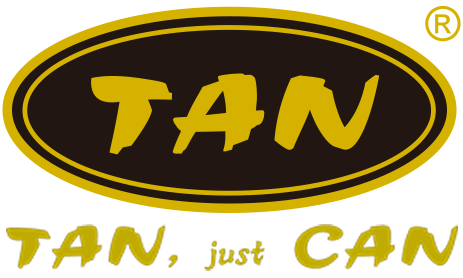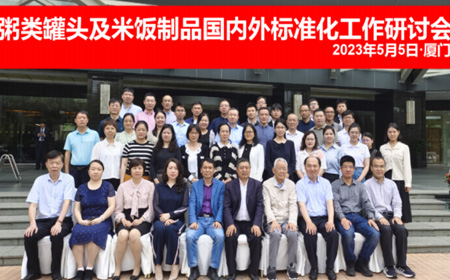In the realm of modern manufacturing, the integration of automation and robotics has revolutionized the efficiency, precision, and scalability of production processes across various industries. Canned food manufacturing, with its high-volume production requirements and stringent quality standards, has embraced automation and robotics to optimize operations and enhance competitiveness. In this blog post, we will delve into the utilization of automation and robotics in canned food manufacturing, exploring its impact on efficiency and productivity. Additionally, we will examine the role of mushroom production technology and offer insights into the future trends of automation in the industry.
Automation in Ingredient Handling:
One of the key areas where automation has transformed canned food manufacturing is in ingredient handling. Automated systems are utilized to precisely measure and dispense ingredients according to predefined recipes, reducing human error and ensuring consistency in product quality.
Automated ingredient handling systems can accurately weigh and transfer bulk quantities of ingredients such as vegetables, fruits, grains, and sauces into mixing and processing equipment. This streamlines the production process, minimizes waste, and improves efficiency by eliminating manual handling tasks.
Insight: Automation in ingredient handling enhances precision, consistency, and efficiency in canned food manufacturing, leading to improved product quality and reduced production costs.
Robotics in Packaging and Assembly:
Robotics play a pivotal role in the packaging and assembly stages of canned food manufacturing, where speed, accuracy, and reliability are paramount. Automated robotic arms are deployed to perform tasks such as filling, sealing, labeling, and palletizing, optimizing throughput and minimizing downtime.
Robotic packaging systems can handle a variety of packaging formats and configurations, allowing manufacturers to adapt to changing market demands and product specifications. These systems are equipped with advanced sensors and vision systems to detect defects, ensuring that only high-quality products reach consumers.
Insight: Robotics in packaging and assembly streamline production processes, increase throughput, and improve product quality in canned food manufacturing, enhancing competitiveness in the market.
Quality Control and Inspection:
Automation has revolutionized quality control and inspection processes in canned food manufacturing, enabling manufacturers to detect defects and ensure compliance with regulatory standards with greater efficiency and accuracy.
Automated inspection systems utilize advanced sensors, cameras, and algorithms to inspect products for defects such as dents, leaks, and foreign objects. These systems can perform real-time inspections at high speeds, minimizing the risk of defective products reaching consumers and reducing the need for manual inspection.
Insight: Automation in quality control and inspection enhances product safety and compliance, mitigating risks and preserving brand reputation in canned food manufacturing.
Integration of Mushroom Production Technology:
In addition to automation and robotics, canned food manufacturers are leveraging mushroom production technology to enhance the nutritional value, flavor, and texture of their products. Mushrooms, with their unique taste and health benefits, are increasingly being incorporated into canned soups, sauces, and vegetable medleys.
Automated processes facilitate the integration of mushroom extracts or derivatives into canned food formulations, ensuring uniform distribution and consistency in product quality. Mushroom production technology enhances the sensory attributes and nutritional profile of canned foods, meeting consumer demand for innovative and nutritious options.
Insight: The integration of mushroom production technology enhances the nutritional value and flavor of canned foods, contributing to consumer satisfaction and market differentiation.
Future Trends and Outlook:
Looking ahead, the role of automation and robotics in canned food manufacturing is expected to continue evolving, driven by advancements in technology and changing market dynamics. Manufacturers are likely to invest in smart manufacturing solutions, including the integration of artificial intelligence, machine learning, and data analytics, to further optimize production processes and improve decision-making capabilities.
Additionally, there is growing interest in collaborative robotics, where humans and robots work together in shared workspaces, enabling greater flexibility and efficiency in production operations. As sustainability becomes a greater priority, manufacturers may also explore automation solutions that minimize energy consumption and waste generation, contributing to environmental stewardship.
Insight: The future of automation in canned food manufacturing lies in smart manufacturing solutions, collaborative robotics, and sustainability-driven automation initiatives, which will further enhance efficiency, flexibility, and competitiveness in the industry.
Conclusion:
In conclusion, automation and robotics have transformed canned food manufacturing, revolutionizing ingredient handling, packaging, assembly, quality control, and inspection processes. By integrating automation and robotics into their operations, manufacturers can achieve higher levels of efficiency, productivity, and quality assurance, ensuring the delivery of safe and high-quality products to consumers. With the continued advancement of technology and the integration of mushroom production technology, canned food manufacturing is poised to embrace further innovation and maintain its position as a cornerstone of the food industry.



采访刊发中国罐头⾏业-01.jpg)

